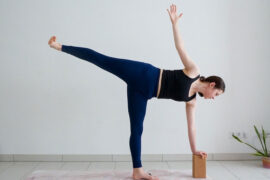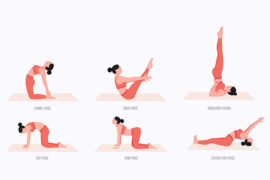Stretching is a crucial but often overlooked component of daily physical activity, offering numerous health benefits such as improving flexibility and maintaining joint mobility, reducing the risk of muscle and joint strains. To make the most of your stretching routine, the American College of Sports Medicine (ACSM) provides some recommendations based on expert consensus. An ideal stretching routine should be well-rounded, targeting different muscle groups and providing a comprehensive approach to enhancing flexibility and mobility. Here’s a general guideline for an effective stretching routine:
- Warm-Up: Start with a brief warm-up to increase blood flow to your muscles. You can do light aerobic exercises like jogging in place or jumping jacks for 5-10 minutes.
2. Dynamic Stretching (5-10 minutes): Dynamic stretching involves moving your muscles and joints through their full range of motion. These stretches are typically done in motion and help prepare your body for more static stretches. Examples include leg swings, arm circles, and hip circles.
3. Static Stretching (10-15 minutes): Focus on static stretches, where you hold each stretch for 15-30 seconds. Perform stretches for the major muscle groups, including the:
- Neck
- Shoulders
- Chest
- Trunk and lower back
- Hips and quadriceps
- Hamstrings
- Calves
- Ankles
4. Pilates or Yoga (10-20 minutes): Consider incorporating elements of Pilates or yoga into your routine. These disciplines emphasize flexibility, balance, and core strength.
5. Cool Down (5 minutes): Finish your stretching routine with gentle, slow movements to gradually reduce your heart rate and relax your muscles.
6. Breathing and Mindfulness: Throughout your routine, focus on deep, controlled breathing and mindfulness. This can enhance relaxation and promote a mind-body connection.
7. Frequency: Aim for 2-3 days of stretching exercises each week, but feel free to stretch lightly daily if you prefer.
8. Listen to Your Body: Pay attention to your body’s feedback. Stretch to the point of tension but not pain. It’s essential to avoid overstretching, which can lead to injury.
9. Stay Hydrated: Maintain proper hydration to support muscle function and flexibility.
10. Consistency: Consistency is key. Over time, regular stretching can lead to significant improvements in flexibility and reduced risk of muscle and joint problems.
Remember that individual needs may vary, so it’s a good idea to consult with a fitness professional or physical therapist to create a personalized stretching routine tailored to your specific goals and limitations.
Disclaimer:
The information contained in this article is for educational and informational purposes only and is not intended as a health advice. We would ask you to consult a qualified professional or medical expert to gain additional knowledge before you choose to consume any product or perform any exercise.








